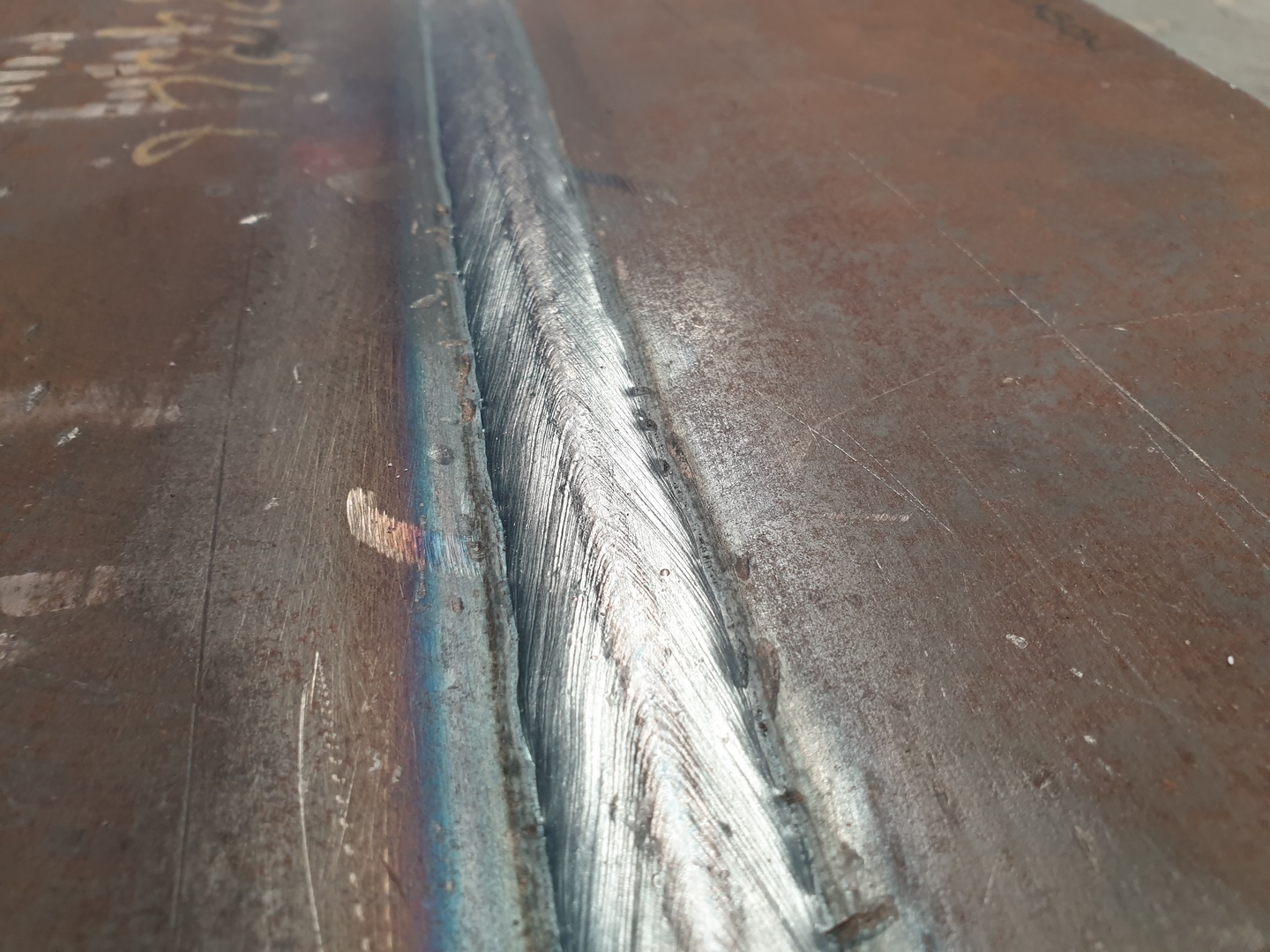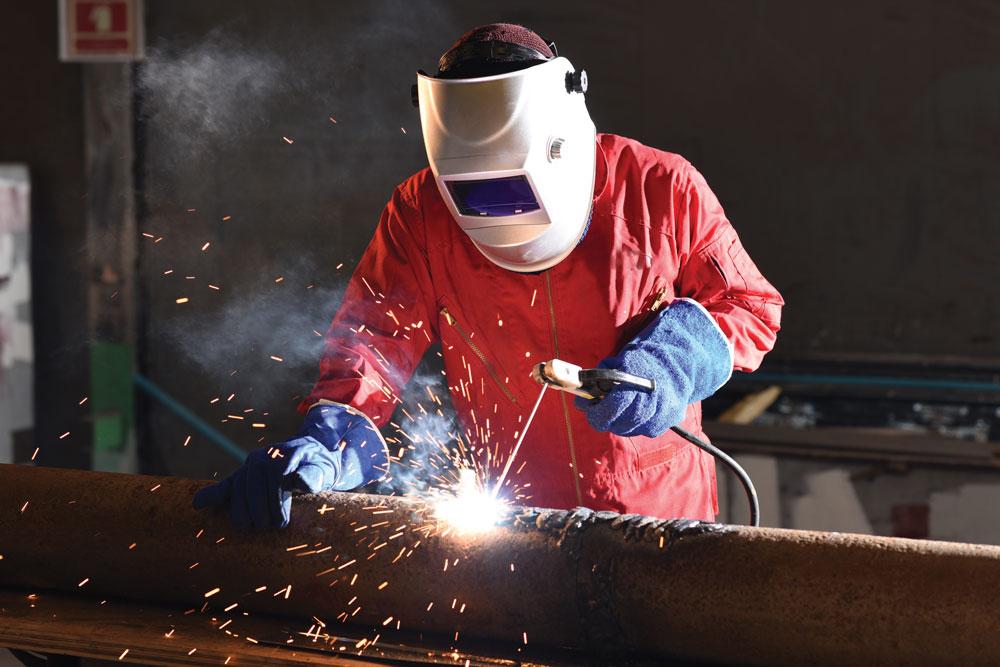What to Get out of a Comprehensive Welding Inspection Racine
What to Get out of a Comprehensive Welding Inspection Racine
Blog Article
Innovative Strategies to Fillet Weld Examination and Screening: Enhancing Weld Quality and Conformity Standards
In the world of welding, the high quality and integrity of fillet welds play a vital role in ensuring the structural soundness and reliability of numerous industrial parts. With the consistent drive for boosted effectiveness and conformity with stringent requirements, the exploration of ingenious strategies to fillet weld evaluation and screening has come to be vital. As markets evolve, the typical techniques might no longer be enough in fulfilling the needs of contemporary welding applications. By embracing cutting-edge modern technologies and techniques, a brand-new perspective of opportunities emerges in the realm of weld high quality analysis and adherence to compliance standards.
Advanced Non-Destructive Screening Methods
Using modern modern technologies, progressed non-destructive screening approaches play a vital function in making sure the honesty and top quality of fillet welds. These approaches, such as phased range ultrasonic testing (PAUT) and magnetic fragment testing (MPT), deal detailed understandings into the weld's internal structure without causing any type of damage to the material. PAUT, as an example, uses multiple ultrasonic aspects to evaluate the weld from various angles, offering a detailed visualization of possible flaws like lack of combination or splits.
Similarly, MPT works in identifying surface-breaking flaws by using an electromagnetic field and iron particles to the weld location. This technique is specifically useful for identifying interruptions that may compromise the weld's stamina. By using these innovative non-destructive testing methods, weld examiners can accurately assess the high quality of fillet welds, ensuring compliance with market standards and guidelines. The capability to spot imperfections at an early stage not only improves weld high quality yet additionally protects against costly rework or failures in architectural integrity, underscoring the significance of these cutting-edge testing strategies in welding evaluations.
Robotics and Automation in Examination
The combination of robotics and automation has changed the evaluation process for fillet welds, improving performance and precision in high quality analysis. Robotics supply specific control and repeatability in inspecting welds, ensuring consistent and reliable results. Automated systems can be set to adhere to specific assessment paths, making certain extensive protection of welds and lowering the risk of human error.
Robotic assessment systems equipped with advanced sensing units can find and measure weld features with high accuracy, providing comprehensive data for analysis. These systems can identify flaws such as splits, lack of blend, and porosity, enabling timely rehabilitative actions to be taken. In addition, robotics and automation permit real-time data collection and analysis, giving immediate comments to drivers and facilitating quick decision-making procedures.
Furthermore, using robotics and automation in fillet weld assessment boosts total productivity by decreasing assessment times and raising inspection throughput. By improving the evaluation procedure, manufacturers can ensure weld quality and conformity criteria are fulfilled successfully, eventually leading to cost financial savings and improved item high quality.
Utilizing Expert System for Analysis
Artificial knowledge plays a pivotal duty in boosting the effectiveness and precision of analysis in fillet weld evaluation procedures. By harnessing the power of AI, inspectors can improve the analysis of weld top quality and compliance criteria, resulting in anchor more trustworthy and exact outcomes. AI algorithms can quickly process vast amounts of information from weld examinations, identifying flaws or incongruities that may be challenging to relate to the nude eye. This advanced innovation allows real-time monitoring of weld quality, enabling instant restorative activities to be taken if any concerns are found.
Furthermore, AI systems can pick up from past assessment information, constantly boosting their ability to determine possible defects and discrepancies in fillet welds. This flexible understanding capability improves the total quality assurance process, minimizing the chance of human mistake and ensuring that welds satisfy the needed criteria. By incorporating expert system into fillet weld analysis, markets can accomplish greater degrees of efficiency, consistency, and compliance in their evaluation methods.
Portable Equipment for On-Site Assessment
 Enhancing field evaluation effectiveness, the fostering of mobile devices revolutionizes on-site assessment processes for fillet welds. These tools provide versatility and ease, permitting assessors to conduct comprehensive assessments in different places, consisting of difficult or remote settings. site here Mobile devices such as ultrasonic screening gadgets, magnetic fragment examination devices, and electronic radiography systems provide real-time information and high-resolution imaging capabilities, making it possible for quick decision-making and immediate responses on weld top quality.
Enhancing field evaluation effectiveness, the fostering of mobile devices revolutionizes on-site assessment processes for fillet welds. These tools provide versatility and ease, permitting assessors to conduct comprehensive assessments in different places, consisting of difficult or remote settings. site here Mobile devices such as ultrasonic screening gadgets, magnetic fragment examination devices, and electronic radiography systems provide real-time information and high-resolution imaging capabilities, making it possible for quick decision-making and immediate responses on weld top quality.One considerable benefit of mobile tools is their capacity to enhance inspection procedures, lowering downtime and enhancing general productivity. Inspectors can conveniently transport these tools to various task sites, removing the demand for moving hefty machinery or parts to off-site centers. Furthermore, the portability of these devices promotes cost-effectiveness by reducing transportation expenditures and speeding up examination timelines.
Additionally, using mobile tools for on-site evaluation promotes aggressive quality assurance procedures, as examiners can promptly recognize and address any type of possible welding defects or inconsistencies. By including these cutting-edge innovations into on-site inspection techniques, welding experts can make sure compliance with sector requirements and enhance weld high quality, eventually leading to improved architectural stability and safety in different welding applications.
Integration of Information Administration Solution
Having actually enhanced on-site evaluation procedures through the use of portable devices, the next phase involves the seamless combination of information management systems to better improve efficiency and information evaluation abilities in fillet weld evaluation and testing. Welding Inspection Racine. By incorporating data administration systems right into the evaluation procedure, companies can streamline data collection, storage, and analysis. This assimilation enables real-time tracking of weld top quality, instant recognition of defects, and punctual decision-making to remedy any issues that might arise throughout the examination procedure
The integration of information administration systems allows seamless interaction in between various stakeholders included in the examination procedure, cultivating collaboration and improving general top quality control measures. Ultimately, the assimilation of information administration systems serves to raise the standards of fillet weld evaluation and screening, ensuring compliance with industry policies and boosting weld quality.
Final Thought
To conclude, ingenious techniques to fillet weld assessment and screening have substantially enhanced weld quality and conformity standards. Advanced non-destructive screening techniques, robotics, automation, artificial knowledge, portable devices, and information monitoring systems find out this here have revolutionized the method weld examinations are carried out. By making use of these modern technologies, sectors can make sure that welds fulfill the called for high quality criteria and regulations, inevitably boosting general effectiveness and safety and security in welding processes.

By using these advanced non-destructive testing techniques, weld inspectors can accurately examine the high quality of fillet welds, making certain compliance with industry criteria and policies. Portable tools such as ultrasonic testing devices, magnetic bit evaluation equipment, and electronic radiography systems offer real-time data and high-resolution imaging abilities, making it possible for fast decision-making and immediate comments on weld top quality.
Having actually maximized on-site inspection processes via the application of mobile devices, the next phase includes the smooth combination of information management systems to better boost performance and information analysis abilities in fillet weld evaluation and screening (Welding Inspection Racine). Ultimately, the assimilation of data administration systems serves to elevate the standards of fillet weld assessment and testing, guaranteeing conformity with market policies and improving weld high quality
 In final thought, ingenious strategies to fillet weld evaluation and testing have considerably enhanced weld high quality and compliance standards.
In final thought, ingenious strategies to fillet weld evaluation and testing have considerably enhanced weld high quality and compliance standards.Report this page